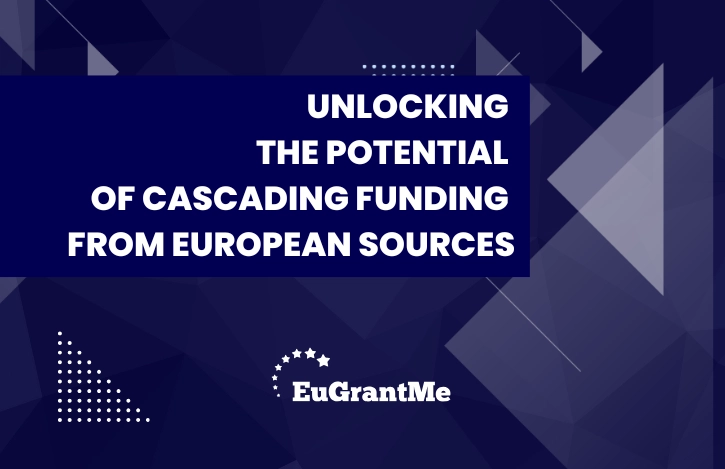Cascading funding is an effective mechanism for distributing European financial resources to businesses, research institutions, and innovators. It simplifies access to EU funds, particularly for SMEs and emerging projects. By leveraging this funding model, organisations can secure financial support with less administrative burden. Understanding how it works and where to find opportunities is essential for maximising its benefits.
Understanding Cascading Funding
Cascading funding, also known as financial support to third parties (FSTP), allows larger projects to distribute EU funds to smaller entities. The European Commission delegates these funds to intermediary organisations, which then issue open calls for applicants. This model ensures that funding reaches innovative projects that may not qualify for direct EU grants.
Unlike traditional EU funding programmes, cascading funding operates under a simplified framework. It reduces bureaucracy and accelerates access to financial support. Eligible beneficiaries often include start-ups, SMEs, research organisations, and technology developers. These groups receive financial aid to advance projects aligned with European strategic objectives.
Benefits
Cascading funding provides several advantages for organisations seeking financial support. The process is faster than traditional EU grants. Applications are usually shorter and easier to complete. This structure enables more businesses and researchers to access funding without complex administrative barriers.
Another benefit is targeted support. Calls for cascading funding focus on specific industries, technologies, or innovation areas. This ensures that funds reach projects with high potential for impact. Applicants also receive mentoring, networking opportunities, and access to industry expertise.
For SMEs and start-ups, cascading funding reduces the competition faced in large-scale EU programmes. Instead of competing at the European level, they apply to smaller, niche calls. This increases their chances of securing financial support and scaling their innovations.
Where to Find Cascading Funding Opportunities
Funding opportunities are published through EU-funded projects, research consortia, and innovation programmes. Horizon Europe, Digital Europe, and other European initiatives frequently include cascading funding calls. These calls are often available on the websites of intermediary organisations managing EU projects.
Sector-specific platforms and funding portals provide updates on new opportunities. Enterprise Europe Network, the European Innovation Council, and national contact points offer guidance on accessing these funds. Staying informed about ongoing projects and upcoming calls is crucial for potential applicants.
Networking is also essential. Engaging with industry clusters, innovation hubs, and EU-funded networks increases visibility and access to relevant opportunities. Many funding calls prioritise collaborative projects, making partnerships a valuable strategy.
How to Apply for Cascading Funding
Applying for cascading funding requires preparation. Each call outlines eligibility criteria, funding scope, and submission requirements. Applicants must demonstrate their project’s alignment with EU priorities and the specific objectives of the funding programme.
A strong proposal should highlight innovation, expected impact, and feasibility. Clear project plans, technical details, and realistic budgeting strengthen the application. Some calls may also require proof of market potential or scalability.
Unlike larger EU grants, cascading funding applications are usually reviewed by the intermediary organisations managing the funds. The evaluation process tends to be faster, allowing projects to secure funding within a shorter timeframe.
Challenges and Considerations
While cascading funding offers many advantages, it also presents challenges. The availability of calls depends on active EU-funded projects, meaning opportunities fluctuate. Staying updated with new funding rounds requires continuous monitoring.
Another challenge is competition within niche sectors. Although the applicant pool is smaller, high-quality proposals are essential for securing funding. Projects must align closely with the objectives of the specific funding call.
Administrative requirements are lighter than traditional EU grants but still require careful attention. Proper documentation, reporting, and financial management are necessary for compliance. Beneficiaries must follow the funding guidelines set by the intermediary organisation.
Future Outlook
Cascading funding is becoming an increasingly important tool for EU financial distribution. As European policies focus on fostering innovation, digital transformation, and sustainability, more funding opportunities will emerge. The mechanism ensures that financial support reaches dynamic and high-potential projects.
Organisations that understand how to navigate cascading funding can unlock valuable resources. Staying informed, building strong partnerships, and preparing competitive applications will improve their chances of success. By leveraging cascading funding, businesses and researchers can contribute to Europe’s innovation ecosystem and drive impactful change.
At EuGrantMe, we are passionate about fostering innovation and empowering ambitious minds to flourish. Our mission revolves around providing top-notch grant writing services for the EIC Accelerator and Horizon grants in Europe. We enable our customers to unlock the full potential of their ground-breaking ideas.
Do you have a project to turn into reality?
Contact us!


